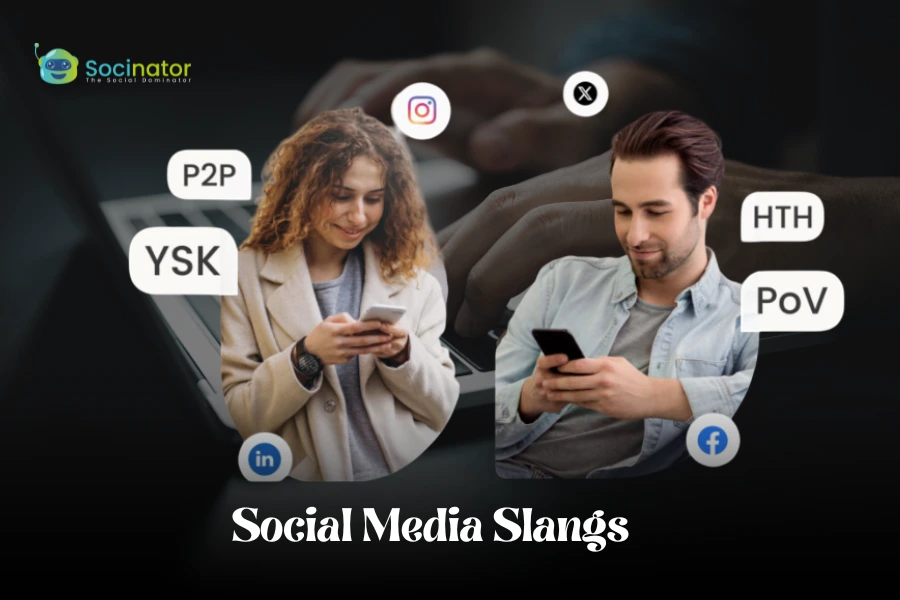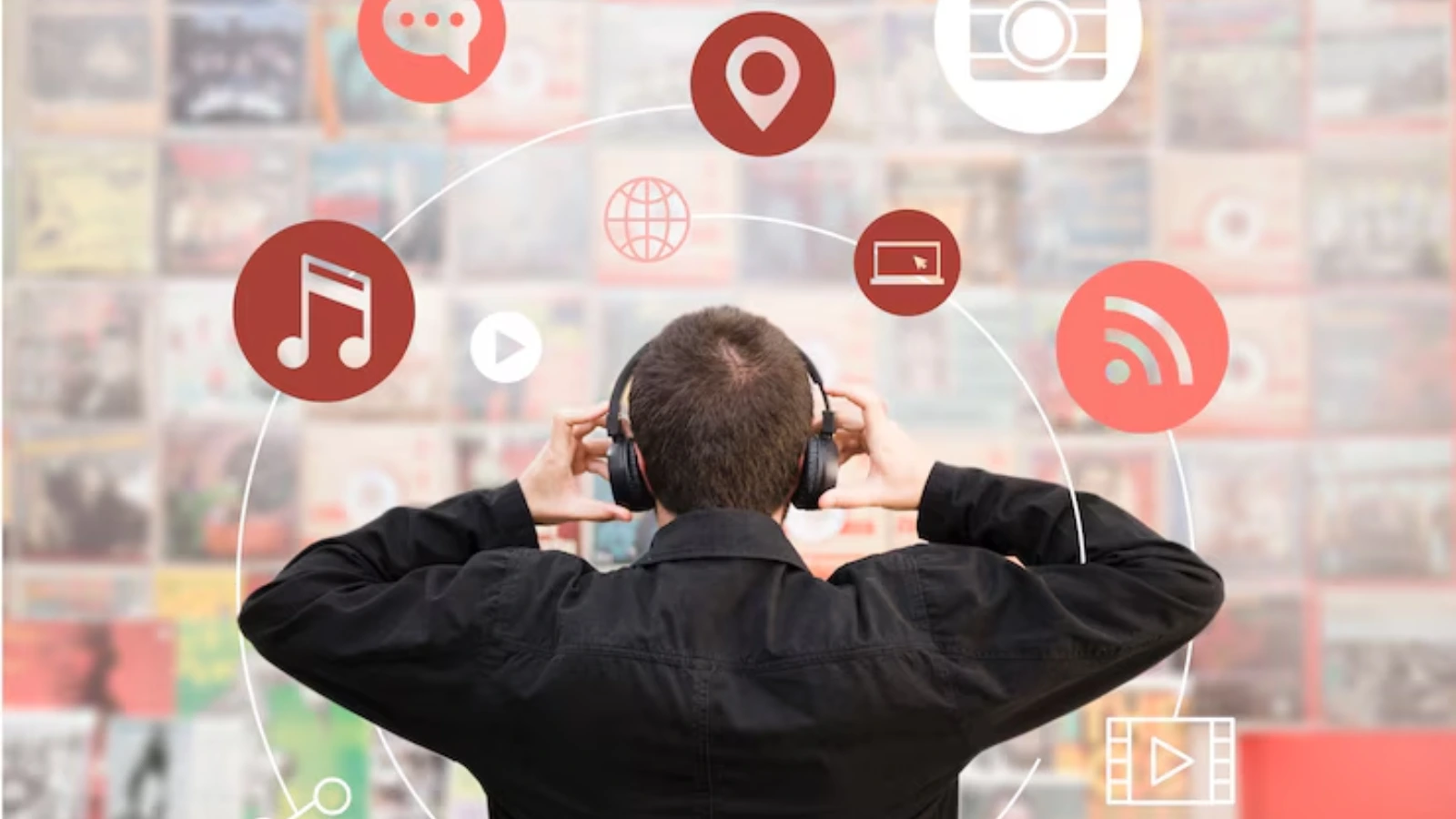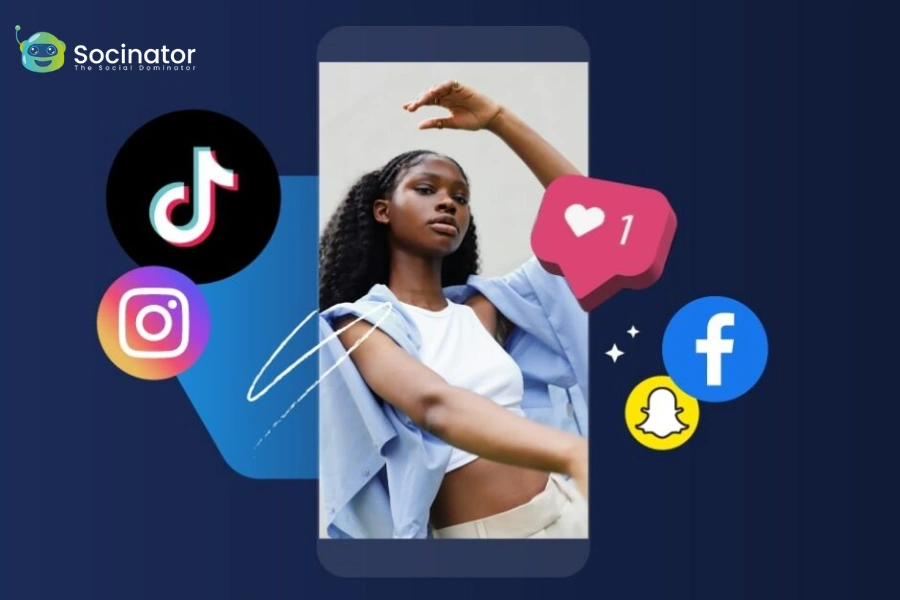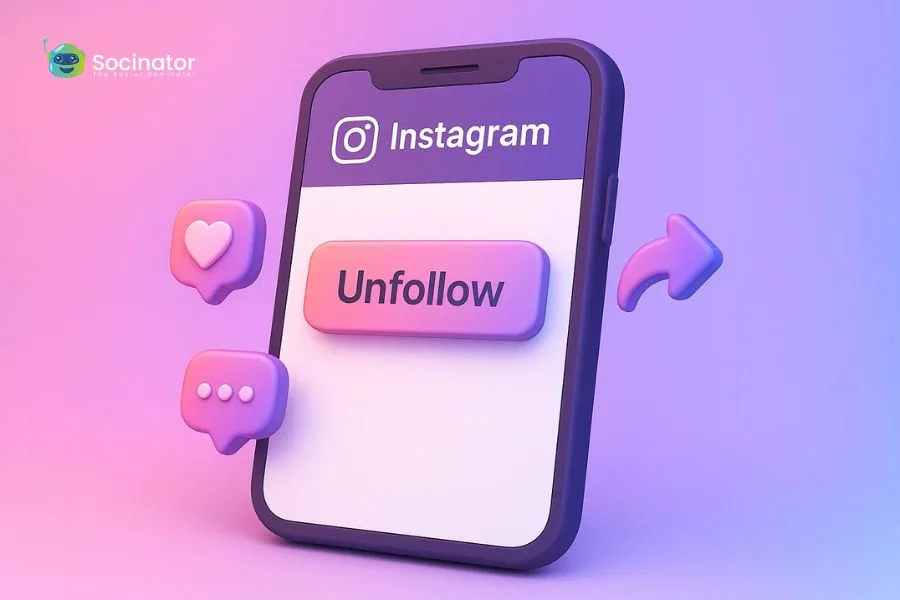The rapid evolution of language on the internet is particularly evident in the ever-changing realm of social media slang. Each year brings a wave of new phrases, acronyms, and expressions that reflect how people communicate online.
In 2025, social media slang continues to evolve rapidly, shaped by Gen Z, Gen Alpha, influencers, meme culture, and AI-generated content. Understanding the latest slang is essential for staying culturally relevant online, especially as digital communication becomes more casual, expressive, and fast-paced.
In this blog, we will explore 2025’s most popular slang, delving into what these terms mean, why they matter, and how to use them effectively.
In a hurry? Listen to the blog instead!
What are Social Media Slang Words?
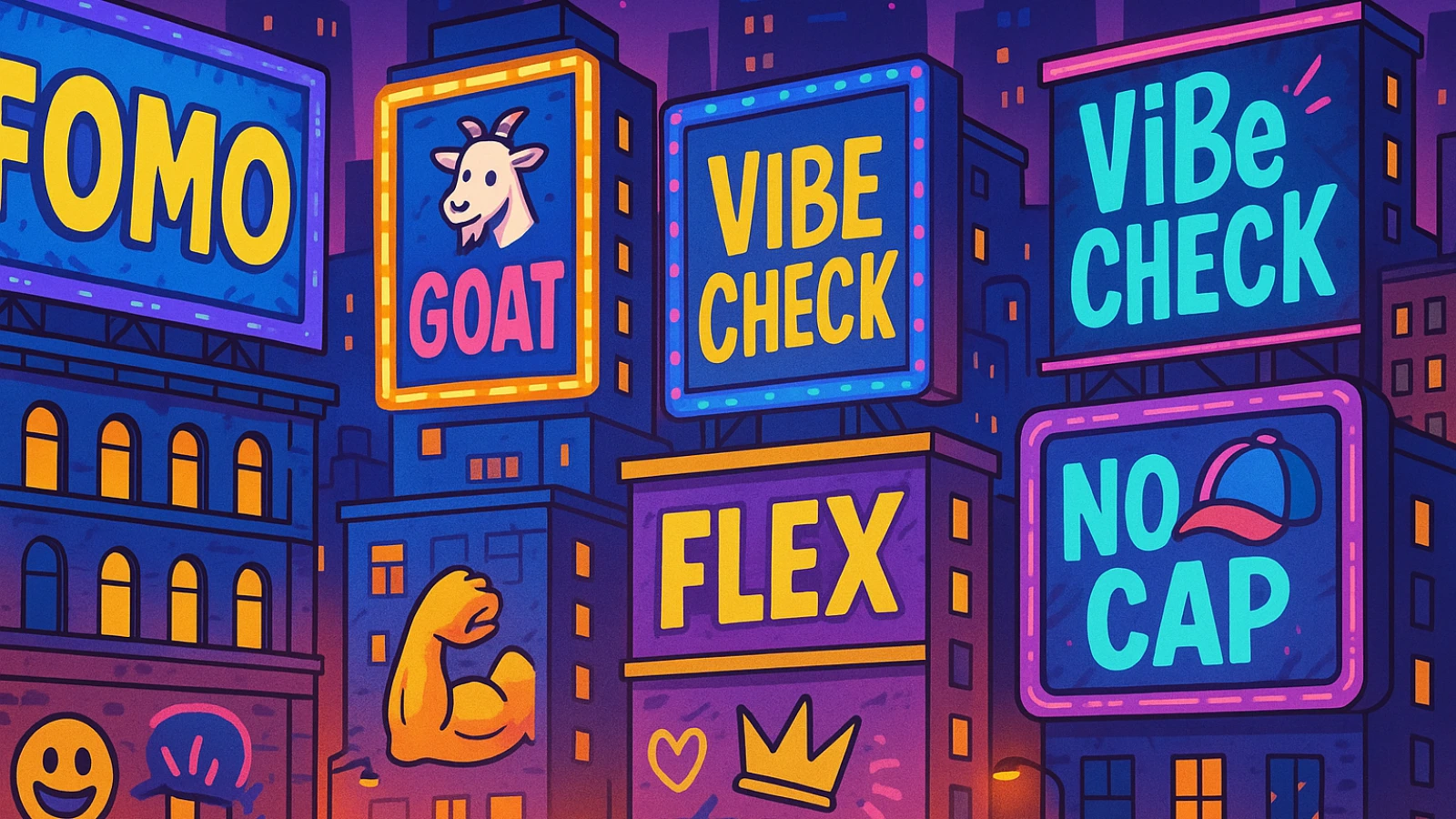
Social media slang refers to the informal language, abbreviations, or acronyms that gain popularity through platforms like Instagram, TikTok, Twitter, and others. These terms often originate from youth culture, memes, trends, and internet humor. They spread quickly due to the viral nature of digital content and became part of everyday online communication.
Unlike traditional slang, social media slang evolves more rapidly and has a shorter lifespan. A word or phrase that is viral today might become outdated in a few months. Some terms may also have multiple meanings depending on the platform or the context in which they are used.
Understanding these expressions is crucial for anyone engaged in online marketing, content creation, or community building. Recognizing these terms helps users appear relatable and informed, enhancing engagement and authenticity in digital interactions.
Why Social Media Slang Matters In 2025?
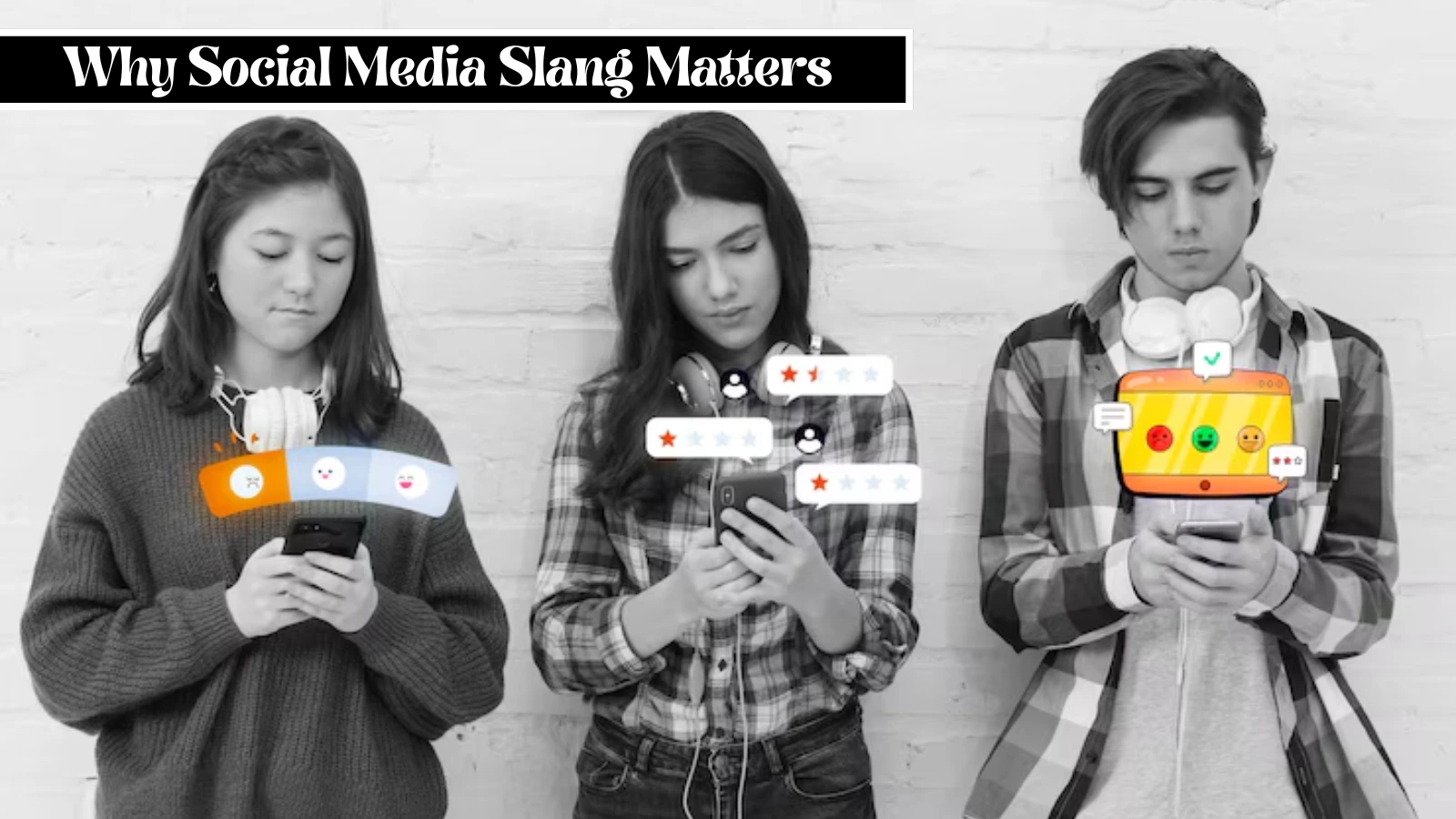
In 2025, understanding social media slang goes beyond keeping up with Gen Z trends. Whether you’re a brand aiming to connect with your audience, an influencer building your identity, or just someone who enjoys being online, mastering the latest lingo can elevate your digital presence.
Here’s why social media slangs matter & carries real weight:
1. Cultural Relevancy:
Staying culturally relevant is crucial for both individuals and brands. When you use slang accurately and in context, your content feels timely and in tune with what’s happening. In a world where pop culture shifts by the hour, incorporating trending lingo helps you appear more human, approachable, and in the know.
For brands, especially, this relatability can bridge the gap between corporate messaging and consumer authenticity. A clever use of the right phrase can turn a bland caption into something that resonates and gets shared.
2. Faster, More Natural Engagement:
Slang simplifies complex emotions or reactions into bite-sized phrases. Words like delulu or rizz carry emotional weight and tone that go beyond dictionary definitions. This shorthand accelerates engagement because followers instantly understand the vibe without needing lengthy explanations.
Moreover, users are more inclined to interact with posts that mirror the language they use in their own lives. This familiarity breeds comfort and encourages comments, shares, and likes, making your content more discoverable and interactive.
3. Sense of Belonging and Identity:
Online communities often form around shared language. Whether it’s a fandom, a niche aesthetic, or a meme culture, using the same social media slang signals you’re part of the group. This creates a sense of unity, trust, and loyalty among followers.
When creators or brands use familiar terms authentically, it fosters an inclusive space where audiences feel seen and understood. In 2025, digital tribes thrive on shared identity, and slang is one of the most powerful markers of that identity.
4. Algorithmic Favorability:
Content infused with current social media term slang has a better chance of surfacing on feeds and For You pages. Algorithms are increasingly designed to reward relevancy and trending behavior. Posts that include up-to-date slang terms are more likely to align with ongoing conversations, boosting their visibility.
When used wisely, slang can help you ride the wave of viral trends. This means more exposure, higher engagement, and stronger platform performance, all without needing to drastically change your content strategy.
5. Clear and Impactful Communication:
In a space where attention spans are shrinking, brevity is power. Social media slang allows you to say more with less. A term like slaycation instantly conveys luxury, style, and travel, all in one catchy word.
This linguistic efficiency not only makes your messaging snappier but also leaves a stronger impression. People remember punchy phrases more than long-winded sentences, especially when those phrases are emotionally charged or humor-laden.
Don’t just keep up—lead the trend. Let Socinator power your next viral move.
8 Most Popular Social Media Slang Terms In 2025

Social media is buzzing with fresh slang that keeps the internet vibe alive. Whether you’re scrolling through Instagram reels, tweeting your hot takes, or sliding into DMs, staying updated on the newest social media slang is critical for anyone who wants to blend in with digital natives.
Here are eight of the most widely used slang expressions making waves in 2025:
1. WYS (What You Sayin’?):
A fresh spin on the classic “What’s up?”, WYS is a casual way to check in with someone. It’s often used in texts or DMs to start a low-effort convo, especially when you don’t have anything specific to say but want to stay connected. Think of it as a vibe check between friends or followers.
2. Glow-Up Flex:
This isn’t just a transformation—it’s a statement. A Glow-Up Flex is when someone proudly shows off their physical, emotional, or lifestyle transformation, usually through curated photos or videos. It’s not just look how far I’ve come, it’s look how far I’ve come, and I’m owning it.
3. Cap Stack:
A slang term for when someone piles on multiple lies or exaggerations, making their story increasingly unbelievable, essentially stacking caps (lies) one after another.
4. Mirror Drop:
A Mirror Drop is the intentional release of a mirror selfie, usually well-timed for attention and engagement. Often staged to perfection, it’s less about the mirror and more about the drip—what you’re wearing, your glow, your confidence.
5. Delulu:
Short for delusional, Delulu is playfully used when someone is being wildly optimistic or imagining scenarios far from reality, especially in dating or fan culture. It’s often said in self-aware humor: I know he liked my story, but I’m not trying to be delulu… unless?
6. No Cap:
This phrase emphasizes honesty and authenticity. Saying no cap means I’m being serious or I’m not lying. It’s often used to stress a strong opinion or a truth bomb: That movie was top tier, no cap.
7. Situationship:
A blurry space between friendship and a committed relationship. A situationship involves romantic connections without the clarity or commitment of a formal relationship. It’s defined more by vibes than labels, often fun, but potentially confusing.
8. Threadception:
Named after the movie Inception, Threadception happens when a comment section becomes a maze of replies to replies to replies, sometimes more entertaining than the original post. It’s easy to get lost in the layers of hot takes, jokes, and debates.
5 Ways To Use Social Media Slang Effortlessly

Mastering slang for social media doesn’t mean trying to sound like a teenager or peppering every sentence with buzzwords. Instead, it’s about smart, authentic usage.
Here are five expanded strategies to use slang effectively and naturally:
1. Stay Updated With Trends:
Social media slang evolves quickly. To keep up, regularly follow digital trend reports, influential creators, and online communities. Platforms like Twitter (X) and Instagram Reels are where many new slang terms are born.
Observing how these expressions are used in comments, captions, and videos can help you understand their context and tone. Being plugged into digital culture is the best way to stay current without appearing try-hard.
2. Use in Context, Not for Clout:
Authenticity is everything. Misusing slang, or using it excessively just to seem cool, can backfire. Only incorporate a slang term if it genuinely fits the tone and context of your content.
For example, using “delulu” while joking about dream goals in a lighthearted post works, but using it in a formal update may feel off. Keep your audience and platform in mind to ensure your usage feels seamless and relevant.
3. Engage With User-Generated Content:
One of the best ways to integrate social media slang is to let your audience lead. Encourage user-generated content (UGC) that uses trending slang through hashtag challenges, polls, or caption contests.
This crowdsourced engagement not only boosts interaction but also keeps your brand aligned with what’s culturally resonating. You’ll gain valuable insights into how your audience naturally uses slang and can mirror that tone in your messaging.
4. Blend With Brand Voice:
Every brand has a unique voice, whether it’s playful, inspirational, or professional. Social media slang should enhance, not override, that voice. A fun, youthful brand can use slang more liberally, while a corporate or luxury brand might opt for subtle references.
The key is to choose slang that aligns with your values and overall tone. Being selective ensures that you sound current without diluting your identity.
5. Use Tools to Assist:
You don’t need to manually scan every platform for new terms. Using a social media automation tool can make this process smoother. These tools monitor trending keywords, hashtags, and phrases, alerting you to emerging slang in real time.
This allows you to adopt language your audience is already embracing. The best tools also help schedule and tailor content using this intel, ensuring your messaging remains timely and relevant.
Tools To Track And Understand Social Media Slang
Keeping up with slang doesn’t have to be a manual task. Here are several tools and platforms that can assist:
1. Trendwatching Tools:
Use trend analysis platforms to uncover emerging slang, viral keywords, and cultural shifts. These tools scan web activity, social chatter, and content performance to highlight what’s gaining traction in real time.
2. AI-Powered Social Media Automation Software:
Modern social media tools now include AI-based features that detect trending terms and recommend optimal post language. These platforms help you use slang effectively by analyzing real-time engagement and adapting posts to current conversations.
3. Online Slang Dictionaries:
Online slang dictionaries and language platforms provide up-to-date definitions, usage examples, and crowd-sourced explanations. They’re a quick and reliable way to understand slang terms before using them in content.
4. Social Listening Platforms:
By monitoring online discussions, comment sections, and hashtags, social listening tools help you discover which slang terms are gaining popularity. These platforms also help track sentiment, so you can avoid misuse and understand how terms are perceived by different audiences.
5. Use Social Media Automation:
Using a social media automation tool like Socinator can help you to automatically publish your posts, comments, and messages on multiple social media platforms. You can use this tool to schedule posts across platforms like Instagram, Facebook, Twitter, LinkedIn, and more, but you can also use this to monitor the latest trends, hashtags, and emerging slang through smart automation and analytics.
With features like real-time engagement tracking, hashtag suggestions, and auto-reposting, Socinator makes it easier to stay in sync with the evolving language of your audience. It even allows behavioral targeting, so your slang-infused content reaches the right crowd at the right time.
How Socinator Helps You With Social Media Management?
While many automation tools provide trend analysis and content planning, Socinator sets itself apart with its unique blend of affordability and advanced customization. It empowers users to schedule and manage posts across multiple social media platforms with ease and precision.
By automating and refining your social media strategy, Socinator ensures your content remains timely, trend-relevant, and aligned with the evolving language of your audience, including current slang and cultural nuances. Its robust features help creators and brands monitor emerging trends, optimize posting schedules, and engage audiences authentically at scale.
Key Features of Socinator:
Social Media Scheduling:
Plan and publish content across platforms at peak times, ensuring your slang-infused posts hit when engagement is highest.
Content Management:
Organize and curate content efficiently with tools that allow for easy editing, recycling, and management of posts, maintaining a cohesive brand presence.
Audience Targeting
Utilize automation features such as auto-follow, auto-like, and auto-comment to engage with specific user demographics, enhancing audience growth and interaction.
Analytics and Insights:
Access detailed analytics to monitor engagement metrics, follower growth, and post-performance, enabling data-driven decisions to optimize your social media strategy.
Automation Tools:
Automate likes, comments, DMs, and follows to maintain consistent interaction using language your audience resonates with.
Whether you’re building a personal brand or managing clients, Socinator can elevate your voice by keeping it culturally in tune and algorithm-friendly.
Also Read:
17 Ultimate Tools Every Social Media Creator Must Have!
How To Create User Generated Content Campaigns effectively?
What Is The Role Of Social Media Automation In Slang Usage?

Social media automation plays a big role in how slang spreads and evolves. When people use automated tools to post or schedule content, especially influencers or popular pages, they often repeat trending slang to stay relevant. This constant repetition helps certain phrases catch on quickly.
Automation tools also track what language is getting the most engagement, pushing users to use the same slang for better reach.
In the context of slang usage, social media automation tools offer several key benefits:
1. Trend Monitoring:
Top-tier social media automation software integrates AI and machine learning to analyze trending terms and hashtags. These tools identify emerging social media slang before it becomes mainstream, giving users a head start.
2. Content Scheduling with Context:
Some slang terms lose relevance quickly. Automation platforms ensure that pre-scheduled posts use timely language by adapting to real-time trends, thanks to AI-enhanced editing.
3. Engagement Analysis:
Analyzing which slang resonates most with your audience can improve content strategy. Social media automation tracks metrics such as comments, shares, and reactions on slang-laced content.
4. Language Optimization Tools:
Several social media automation tools include built-in suggestions for optimizing captions or posts. These can flag outdated slang or recommend better alternatives.
5. Crisis Management:
If a slang term is misused and causes backlash, automation tools help monitor sentiment and respond quickly, minimizing reputational damage.
Ultimately, social media automation enhances efficiency while enabling more strategic and culturally aware language use.
Conclusion-
Navigating the ever-evolving world of social media slang in 2025 is both an art and a science. As digital communication becomes more nuanced and fast-paced, understanding these terms isn’t just trendy, it’s vital for building real connections, cultural relevance, and digital impact.
Whether you’re a brand strategist refining your voice, an influencer growing your following, or simply someone who wants their content to resonate, being fluent in the language of the internet is essential.
Fortunately, tools like Socinator make it easier than ever to stay in sync with this linguistic evolution. With its smart trend detection, real-time engagement tracking, and content automation features, Socinator helps you stay culturally relevant without constantly chasing the next viral phrase. It empowers you to speak your audience’s language authentically, on time, in context, and with impact.
In 2025, slang is more than just words; it’s a gateway to connection. And with the right tools in your corner, you’re always part of the conversation.
FAQs-
1. What impact does social media slang have on language learning and literacy skills?
Ans. Social media slang can both challenge and enhance language learning. While excessive use may lead to poor grammar or confusion with formal writing, it also encourages creativity, linguistic adaptability, and cultural literacy. Teachers can leverage slang to make learning more relatable while maintaining a clear distinction between informal and academic language.
2. How do regional or cultural differences influence the way social media slang evolves and spreads?
Ans. Regional and cultural differences play a major role in slang development. Local humor, traditions, and languages shape how slang emerges and is interpreted. A phrase that’s trendy in the U.S. might have a completely different interpretation or vibe in places like the UK or South Korea. These differences create diverse micro-trends across platforms, which global users pick up and remix.
3. Can using outdated slang hurt your credibility or brand image on social platforms?
Ans. Yes, using outdated or misused slang can make individuals or brands seem out of touch, inauthentic, or tone-deaf. Audiences—especially younger ones—value cultural accuracy and real-time relevance. To avoid this, always double-check the current usage of a term and monitor audience feedback before integrating slang into your messaging.

